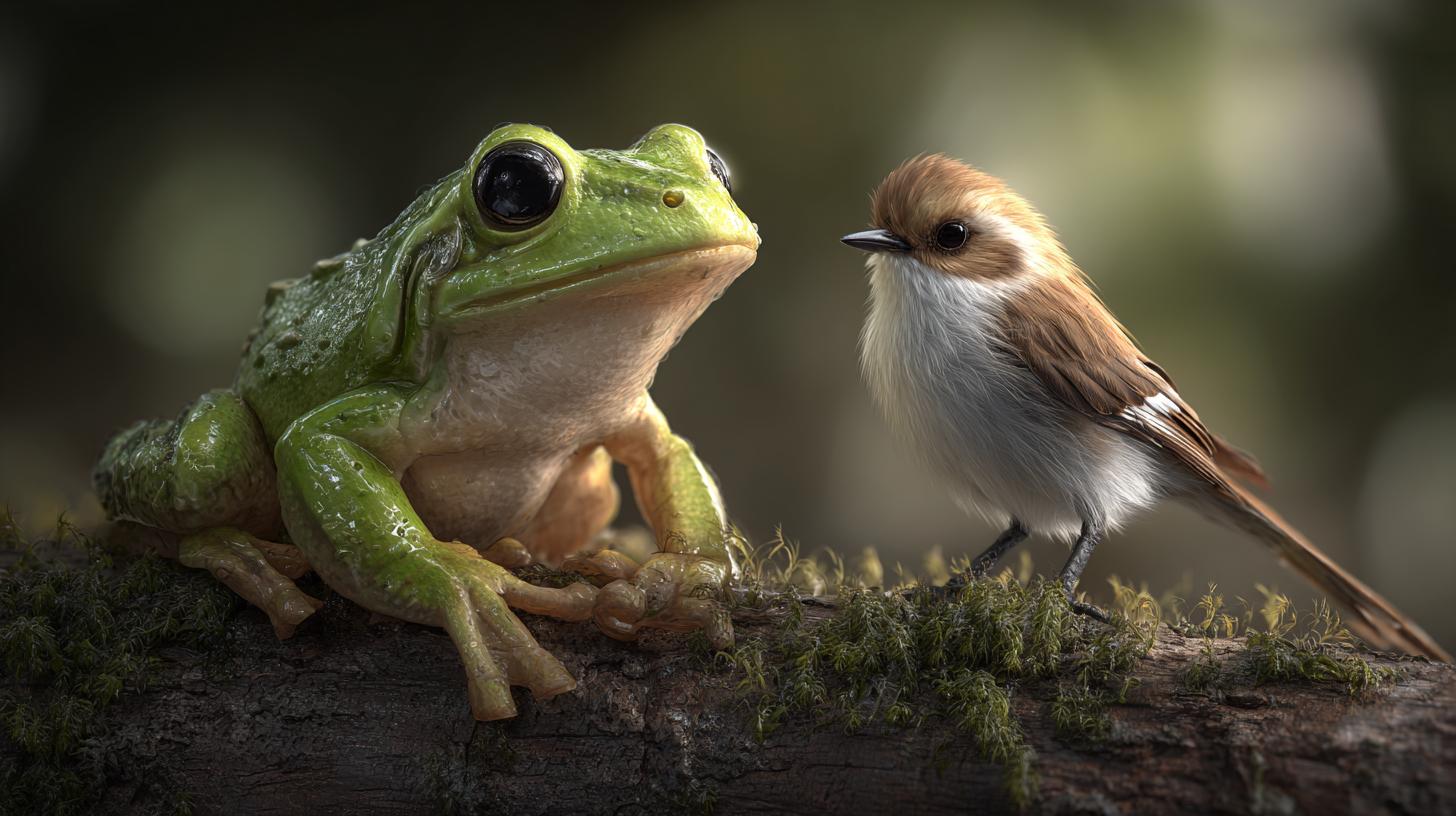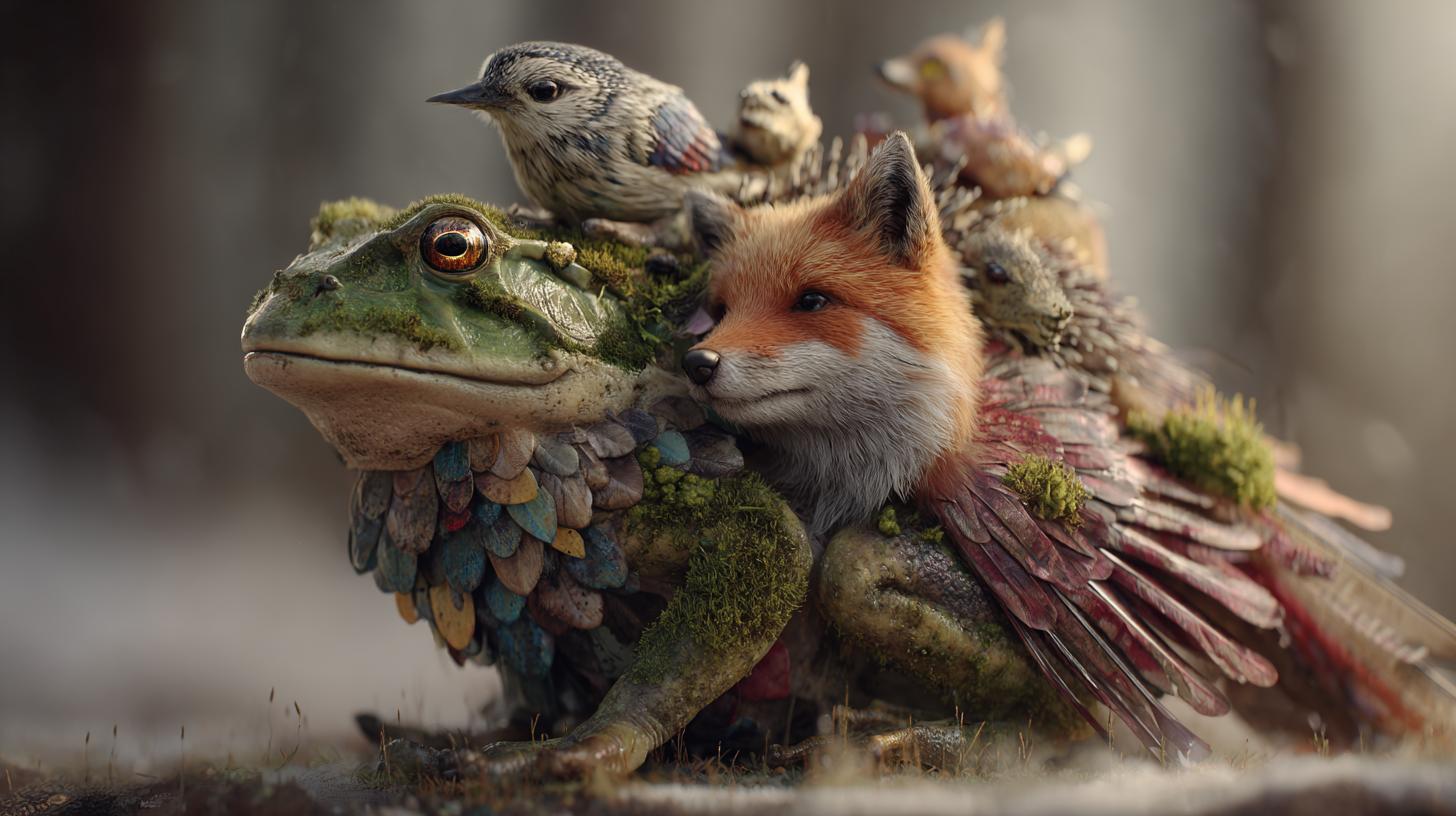In a recent interview with Lex Freedman, Terrence Tao brought up the allegory of foxes and hedg-hogs in mathematics. Foxes know lots of things, hedgehogs know one thing well. As for a reference, I found this allegory. There are other analogies: Freeman Dyson indicated how Francis Bacon and Rene Descartes produced both a polarizing tension as well as a cross fertilization in science. According to Dyson, the Baconians are travelers, exploring science using examples and collecting samples, while the Cartesians stay at home and deduce the truth using axioms and pure thought. In his 2008 Einstein Lecture categorization of mathematicians as “frogs” and “birds”.I have contemplated about my own preferred style of mathematics here in this talk from 2015. I myself would like to see myself as a chimera, a mixture between a frog, a bird and a fox and a hedgehog. But lets get back to the interview. Here is part of the transcript of the Freedman talk, where Tao states:
“So, I think there’s sort of different styles to being a mathematician. I think hedgehogs and fox a fox knows many things a little bit but a hedgehog knows one thing very very well . Aand in mathematics there’s definitely both hedgehogs and foxes. And then there’s people who are kind of uh who can play both roles. I think like ideal collaboration between mathematicians involves both. You need some diversity like um a fox working with many hedgehogs or or vice versa. So yeah but I identify mostly as a fox certainly. I like uh arbitrage somehow you like like um learning how one field works learning the tricks of that field and then going to another field which people don’t think is related, but I can I can adapt the tricks. So see the connections between the fields. There are other mathematicians who are far deeper than I am. Like who really they’re really hedgehogs. They know everything about one field and they’re much faster and more effective in that field. But I can I can give them these extra tools. [Friedman: You said that you can be both the hedgehog and the fox depending on the context depending on the collaboration. So what can you if it’s at all possible speak to the difference between those two ways of thinking about a problem say you’re encountering a new problem you know searching for the connections versus like very singular focus.] I’m much more comfortable with with the uh the uh the fox paradigm. I like looking for analogies narratives. I spend a lot of time if there’s a result I see in one field and I like the result it’s a cool result but I don’t like the proof like it uses types of mathematics that I’m not super familiar with. I often try to reprove it myself using the tools that I favor Um often my proof is worse Um but um by the exercise of doing so um I can say oh now, I can see what the other proof was trying to do – and from that I can get some understanding of of the tools that are used in in that field. So it’s very exploratory very doing crazy things in crazy fields and like reinventing the wheel a lot . Whereas the hedgehog style is I think much more scholarly: you know you’re very knowledge based, you stay up to speed on like all the developments in this field. You know all the history, you have a very good understanding of of exactly the strengths and weaknesses of of each particular uh technique.”



It is a smart thing not to focus on one problem alone. This is justified by the vast amount of mathematical problems which are available. On the other hand, you don’t want to give up too fast. I myself worked for more than a decade at the entropy problem of the standard map which is a hedgehog thing to do. But it might be that the entropy problem has not an easy answer, that it is wrong and our measurements are misleading, or then, that the statement is true but that there is no proof of it. As for Dyson’s frog and bird analogy, it is also healthy to explore both details and special cases as well as contemplating the big picture from above.
[Update June 19: more important than the style of mathematics is probably the way mathematics is done: what tools are allowed, how much collaboration is involved. This comes up also in the above mentioned interview. There is a good climbing analogy here: we can “conquer” a mountain destination as a tourist (like when we visited Gornergrat this summer), a rather decadent thing to do really. It is nothing to brag about. I’m proud however to have climbed the Matterhorn when I was in college even so it is considered an “easy mountain”. There also, it depends on the route. The standard route is easy but there are harder ones on the north-face (which I would never have been able to do). Then, it also matters whether you go alone or not. I had been going with the professional mountain guide Egon Feller from Ausserberg, doing the Matterhorn alone is much much harder as you climb up first mostly at night and because there are many misleading paths. The ultimate way to climb is “free solo”, where you work without any help without any partner and without any tools. This is how I like to do most of the mathematics at the moment (besides also being a bit of a mountain guide and work with students). Working independently is of course a bit risky and similarly than in climbing, also in mathematics you can fall and die. “Dying ” in research is not literal but it can mean having to abandon research in order to pursue something else, simply because you have to be able to support yourself. Being able to do mathematical research has always been a luxury. Maybe it will disappear as a profession, once AI can do research better than humans. I’m still not totally worried. Chess has survived even in a time when computers are much better than humans, people climb mountains also if there is a cable car that brings you up. I loved to walk up mountains with skis even so there is a ski-lift that could bring you up to the same spot. (By the way, in primary school, when everybody had to go to ski camps, we were required in the morning to do the first round by walking up the top with the skis. Only after that we could use the ski-lift). I liked to conquer a wall, even if it is possible to walk up on the side. I like to read a book even so AI can make a one paragraph summary. I like to hike in nature, even so there are youtube videos about it. As the philosopher Erich Fromm (about whom I learned while climbing and skiing in the alps) once wrote about. It is not about “having”. It is about “being”. I’m not proud at all of anything that has been AI generated for me, like about the above three AI generated pictures. It took 30 seconds each to generate. No skills were required. It is completely worthless. A moron can write the prompt that generates it. Anything AI can do has become cheap and rightly so. If no skill is needed to use something, it will also not pay. The real morons are the administrators of universities who urge their students to learn “AI usage skills” (note that this is different than knowing the technology behind it which has value). The ones that use AI do do their work will be the first who are going to be replaced. Everybody who can use a smartphone (and 4 year old can these days already do that) can also use AI. As a consumer, I started to dislike or simply avoid any AI generated content. I literally push the dislike button if I see “AI” or scroll further. I refuse to referee a paper, even if I only suspect it to be AI generated (and they come in fast!). Back to the climbing analogy: there are these videos of boulder problems like this one. I like to watch them. It is important here also that there is no “invisible rope” nor video manipulation or CGI involved. So, also in research and art and sport, it might become important that any researcher, artist and athlete is able to give proof that the work is done without the help of large language models, diffusion models or doping. If somebody is not able to explain the work freely without notes and slides and also document the path which was used to get to to the finding, it will just have to be dismissed as AI garbage. Similarly as if somebody claims to have sent a bolder problem without uncut video footage or having a witness who can verify it. It is what in the sports analogy would be not passing a doping test. We just don’t have the time as humans to wade though this Sh… We are proud humans after all. And similarly as in sports, one should probably disqualify any researcher that uses AI without attribution. The later is important. In the above garbage pictures, it was declared that the pictures were AI generated. ]

